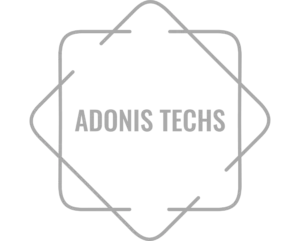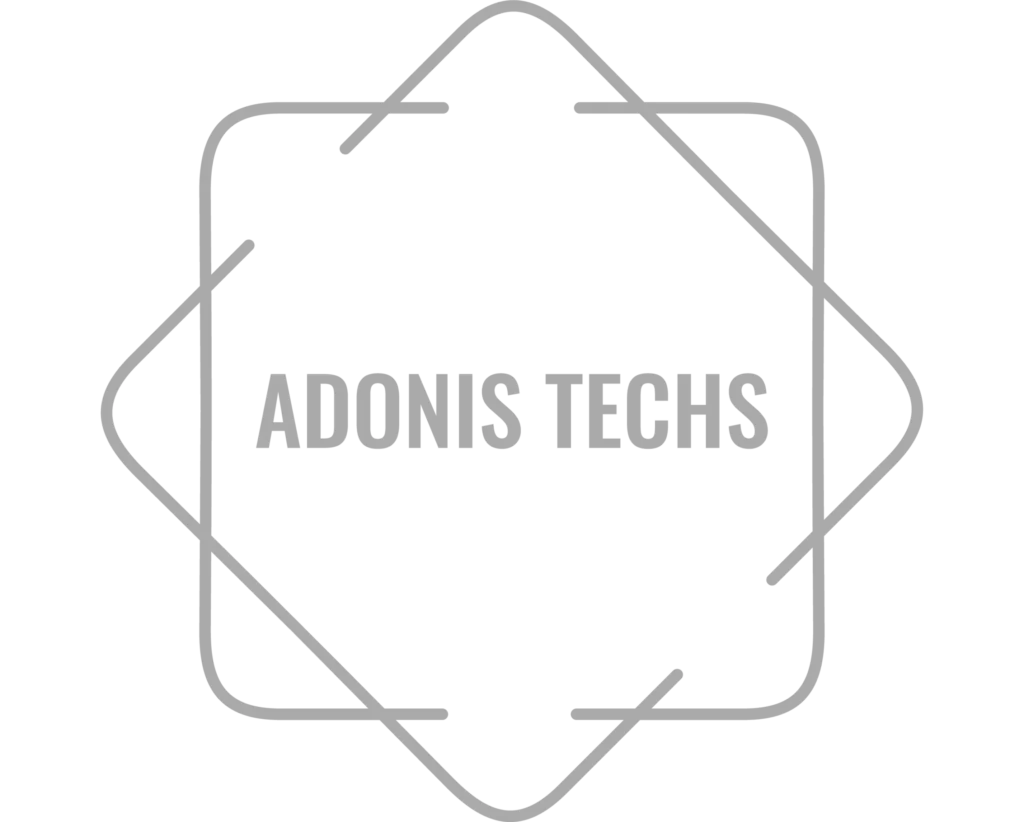
Why Social Media is the Lifeline of Beauty Brands
The beauty industry in the USA has always been driven by visuals, trends, and consumer trust. Today, those elements converge on one powerful channel: social media. From Instagram Reels that showcase quick transformations to TikTok tutorials that go viral overnight, platforms have become the modern-day stage where beauty brands connect with millions of potential customers.
For skincare lines, cosmetic startups, and established beauty retailers alike, social media marketing for beauty brands USA is no longer optional, it’s the lifeline that fuels brand awareness, customer engagement, and sales growth.
Unlike traditional advertising, social media allows beauty businesses to tell authentic stories, leverage real customer experiences, and build communities that thrive on trust and relatability. With billions of beauty-related hashtags, tutorials, and reviews shared daily, the opportunity for beauty brands to stand out has never been greater.
In this article, we’ll explore the latest digital marketing for beauty businesses, highlight strategies that drive results, and uncover what the future of a winning beauty brand social media strategy looks like in 2025 and beyond.
Current Trends in Beauty Marketing
The beauty industry has always been trend-driven, but in 2025 the pace of change is faster than ever. Social media platforms are shaping consumer behavior, setting beauty standards, and even influencing product development. Here are the top trends dominating the space right now:
1. Influencer-Led Campaigns
Influencers, both macro and micro, are still central to beauty marketing. Micro-influencers with smaller but highly engaged audiences often generate higher trust and conversions compared to celebrity endorsements. Consumers value authenticity over polished ads, and beauty businesses are responding by working with influencers who feel relatable.
2. TikTok-Driven Virality
TikTok has become the go-to platform for beauty discovery. Viral tutorials, “GRWM” (Get Ready With Me) videos, and quick product demos can turn unknown brands into household names overnight. Many beauty businesses are building dedicated TikTok strategies to capture this younger, highly active audience.
3. Instagram Reels & Shoppable Posts
Instagram continues to be a powerhouse, particularly for visuals and shopping integration. With features like Reels, Stories, and in-app checkout, beauty brands can inspire, engage, and convert, all without users leaving the app.
4. User-Generated Content (UGC)
Customer reviews, selfies, and transformation videos are among the most persuasive content types. UGC builds trust, encourages community, and helps new buyers see real-world results. Many beauty brands now run campaigns designed specifically to encourage UGC.
5. Rise of Niche Communities
Platforms like Reddit, Pinterest, and even private Facebook groups are becoming hotspots for beauty discussions. Consumers are joining smaller, interest-based communities to seek advice and share experiences, offering brands a chance to connect with highly targeted audiences.
These trends highlight why social media is such a powerful driver of growth for beauty businesses, and why staying ahead of them is critical for long-term success.
Why Social Media Marketing Matters for Beauty Businesses
The beauty industry is built on trust, aesthetics, and storytelling, all elements that social media delivers better than any other channel. For beauty businesses in the USA, investing in a strong social media presence isn’t just about likes or followers; it’s about driving measurable business growth.
1. Building Customer Trust
Consumers are more skeptical than ever of traditional ads. Social media allows beauty brands to showcase authentic testimonials, before-and-after transformations, and influencer collaborations that feel personal and relatable. This transparency builds trust, which is vital in an industry where results matter.
2. Amplifying Visibility
The average consumer spends nearly three hours a day on social platforms, with beauty being one of the top content categories they engage with. A strong social media presence ensures your brand stays in front of potential customers every day, keeping your products top of mind.
3. Driving Reviews and Word-of-Mouth
Social media acts as the modern “word-of-mouth.” Customers often share their experiences, positive or negative, directly on platforms. By actively engaging with customers and encouraging reviews, beauty brands can create powerful social proof that influences new buyers.
4. Supporting the Buyer Journey
From discovery to purchase, social media can guide consumers through every stage of the buyer’s journey. A tutorial sparks interest, a testimonial builds confidence, and a shoppable post makes checkout seamless—all within the same platform.
5. Cost-Effective Growth
Compared to traditional advertising, social media marketing allows beauty businesses to reach highly targeted audiences at a fraction of the cost. Whether it’s paid ads or organic content, beauty brands can scale campaigns based on performance and budget flexibility.
In short, social media marketing isn’t just about engagement, it’s about measurable ROI, from increased sales to long-term brand loyalty.
Top Platforms for Beauty Brands
Not every social media platform delivers the same value for beauty businesses. To maximize growth, beauty brands need to prioritize platforms where their audience is most active and where visual storytelling thrives.
1. Instagram
Instagram remains the number one platform for beauty marketing. With Reels, Stories, and in-app shopping features, it allows beauty brands to showcase products, share tutorials, and convert audiences directly within the app. Its visual-first format is perfect for makeup demos, skincare tips, and transformation stories.
2. TikTok
TikTok is a game-changer for reaching younger demographics. Short-form video content, viral challenges, and authentic product reviews help brands go viral quickly. For beauty businesses, this platform is especially effective in driving awareness and rapid brand growth.
3. Pinterest
Often overlooked, Pinterest is a hidden gem for beauty brands. Users actively search for inspiration, making it ideal for skincare routines, makeup looks, and product discovery. Since pins have a longer lifespan than Instagram posts, Pinterest can drive steady long-term traffic.
4. YouTube
As the home of in-depth tutorials and reviews, YouTube is a must for brands that want to establish authority. Long-form content like skincare routines, makeup hauls, and expert Q&As builds trust and positions a brand as an industry leader.
5. Facebook
While not as trendy as Instagram or TikTok, Facebook remains valuable for beauty businesses targeting older demographics or running localized campaigns. Groups and communities provide space for direct customer engagement, while ads offer robust targeting options.
Each platform has its own strengths, but the most successful beauty brands combine two or three of them strategically, ensuring their content reaches audiences across multiple touchpoints.
Content That Works for Beauty Brands
When it comes to social media marketing for beauty brands in the USA, the type of content you produce can make or break your strategy. Beauty is one of the most visually driven industries, so content must be engaging, authentic, and relatable to capture attention and build trust.
1. Tutorials and How-To Videos
Step-by-step tutorials on applying makeup, using skincare products, or styling hair are among the most consumed forms of beauty content. They not only showcase your products in action but also educate customers, making them more confident buyers.
2. Transformation Stories
Before-and-after content is highly effective in the beauty space. It provides social proof, shows real results, and builds trust in the product’s effectiveness. Transformation stories are especially powerful for skincare and wellness products.
3. User-Generated Content (UGC)
Encouraging customers to share their own experiences with your products can amplify authenticity. UGC campaigns help brands leverage satisfied customers as micro-influencers, while also saving on content production costs.
4. Behind-the-Scenes Content
Sharing behind-the-scenes footage of product development, packaging, or even team culture humanizes the brand. Audiences connect more deeply with businesses that showcase transparency.
5. Trend-Driven Posts
Jumping on beauty-related trends—whether it’s a TikTok challenge, Instagram reel format, or seasonal beauty trend, can significantly boost reach and visibility. The key is to adapt the trend in a way that aligns with your brand identity.
6. Educational Content
Consumers increasingly look for expert advice on skincare routines, ingredient breakdowns, and beauty myths. Providing valuable educational content positions your brand as both trustworthy and authoritative.
By diversifying your content mix across tutorials, user stories, and trend-based posts, beauty brands can foster strong engagement and build long-term loyalty.
Paid vs. Organic Social Media
For beauty brands, striking the right balance between organic reach and paid promotion is essential. Both approaches play a different but equally important role in building visibility and driving sales.
Organic Social Media
Organic content is everything you post without paid promotion, tutorials, behind-the-scenes stories, customer testimonials, and influencer collaborations. The key benefits include:
- Building trust and authenticity through real engagement.
- Strengthening relationships with loyal customers.
- Creating long-term brand awareness at a low cost.
However, due to algorithms, organic reach is often limited. That’s why it’s best used for storytelling, community building, and brand personality.
Paid Social Media
Paid campaigns, on the other hand, allow beauty businesses to scale faster. With advanced targeting on platforms like Instagram, TikTok, and Facebook, brands can:
- Reach new audiences based on interests, demographics, and behaviors.
- Retarget users who visited their website or engaged with content.
- Promote product launches, seasonal collections, or special offers.
Paid ads work best when they highlight high-performing organic content. For example, if a product demo reel goes viral organically, turning it into a paid ad can amplify reach and drive conversions.
The Balance
The most successful beauty brands use both. Organic content builds community and credibility, while paid ads provide the fuel to expand reach and accelerate growth. Together, they form a powerful strategy that keeps the brand visible, relevant, and profitable.
The Role of Influencer Collaborations
Influencer marketing has become a cornerstone of social media marketing for beauty brands in the USA. Consumers trust recommendations from people they admire more than traditional advertisements, making influencer collaborations a high-ROI strategy for beauty businesses.
Why Influencers Matter
- Authenticity: Influencers create relatable, real-life content that resonates with audiences.
- Social Proof: When a trusted beauty influencer endorses a product, it validates its effectiveness.
- Expanded Reach: Collaborating with influencers allows beauty brands to tap into new and highly engaged audiences.
Micro vs. Macro Influencers
- Micro-Influencers (5K–100K followers): They often have higher engagement rates and stronger community trust. They are ideal for niche beauty products or localized campaigns.
- Macro-Influencers (100K+ followers): They offer massive reach, perfect for nationwide launches or brand awareness campaigns. However, collaborations are usually more expensive.
Best Practices for Beauty Brands
- Choose Alignment Over Numbers: Partner with influencers who genuinely align with your brand values and aesthetic.
- Encourage Creative Freedom: Influencers know their audience best, so let them showcase your product in their own authentic style.
- Leverage Long-Term Partnerships: Instead of one-off posts, ongoing collaborations create stronger brand recognition and loyalty.
- Track Performance: Monitor engagement, clicks, and conversions to ensure the collaboration delivers measurable results.
Influencer partnerships, when done strategically, can amplify your beauty brand social media strategy, drive product awareness, and build trust with new customers.
Measuring Success
Social media marketing is not just about creating content; it’s about tracking results and optimizing strategies for better outcomes. For digital marketing for beauty businesses, clear performance measurement is the difference between guessing and growing.
Key Metrics to Track
- Engagement Rate: Likes, comments, shares, and saves show how well your content resonates with your audience.
- Follower Growth: A steady increase in followers indicates brand visibility and reach are expanding.
- Click-Through Rate (CTR): Measures how many users take action by visiting your website or product page.
- Return on Ad Spend (ROAS): Essential for paid campaigns, shows how much revenue you generate compared to ad costs.
- Sales Lift & Conversions: Ultimately, beauty brands should measure how social efforts translate into actual purchases.
Tools for Tracking
- Native Analytics: Instagram Insights, TikTok Analytics, and YouTube Studio provide in-depth engagement data.
- Google Analytics: Helps measure how social traffic converts into website actions like purchases or sign-ups.
- Third-Party Tools: Platforms like Hootsuite, Sprout Social, and Later streamline tracking and reporting.
Why Measuring Matters
Without tracking, beauty brands risk wasting time and budget on content that doesn’t perform. By monitoring performance regularly, brands can:
- Double down on what works (e.g., tutorials or influencer collabs).
- Adjust campaigns that underperform.
- Align social media goals with overall business growth.
Consistent tracking ensures your beauty brand social media strategy is delivering both visibility and measurable business impact.
Future Outlook – AI Tools, Personalization, and AR Try-Ons
The future of social media marketing for beauty brands in the USA is being shaped by technology. Consumers expect more personalized, interactive, and innovative experiences—and beauty brands that adapt early will stay ahead of the curve.
AI-Powered Personalization
Artificial intelligence tools are helping beauty businesses deliver tailored recommendations. From personalized skincare regimens to AI-driven chatbots answering product questions, personalization increases engagement and customer satisfaction.
Augmented Reality (AR) Try-Ons
AR filters are becoming a game-changer for the beauty industry. Platforms like Instagram and Snapchat now allow users to “try on” makeup virtually before buying. This reduces purchase hesitation and drives conversions, especially in eCommerce.
Predictive Analytics
With AI, brands can forecast customer behavior, predicting what products might trend next or when customers are likely to repurchase. This data-driven approach empowers smarter inventory and marketing decisions.
The Rise of Social Commerce
Shoppable posts, TikTok Shop, and Instagram Checkout are turning social platforms into direct sales channels. For beauty brands, this means fewer barriers between discovery and purchase.
Sustainability & Transparency
Beyond technology, consumers increasingly expect brands to be ethical and eco-conscious. Social media will play a key role in communicating sustainability initiatives and building trust with conscious buyers.
By embracing digital marketing for beauty businesses with AI, AR, and social commerce, beauty brands can create memorable experiences and stay competitive in a rapidly evolving market.
Why Beauty Brands Should Partner with AdonisTechs
Social media has become the heartbeat of the beauty industry. From influencer-driven trends to interactive AR try-ons, it’s clear that social media marketing for beauty brands in the USA is no longer optional, it’s essential. With the right beauty brand social media strategy, businesses can build trust, reach new audiences, and transform followers into loyal customers.
However, navigating the ever-changing digital landscape requires expertise. That’s where AdonisTechs comes in. We specialize in digital marketing for beauty businesses, offering tailored strategies that combine creativity with data-driven results. Whether you need influencer partnerships, content planning, paid ad campaigns, or long-term social growth management, our team ensures your brand thrives in today’s competitive space.
If you’re ready to elevate your beauty brand and harness the power of social media for growth, contact AdonisTechs today for a custom digital strategy built just for you.


